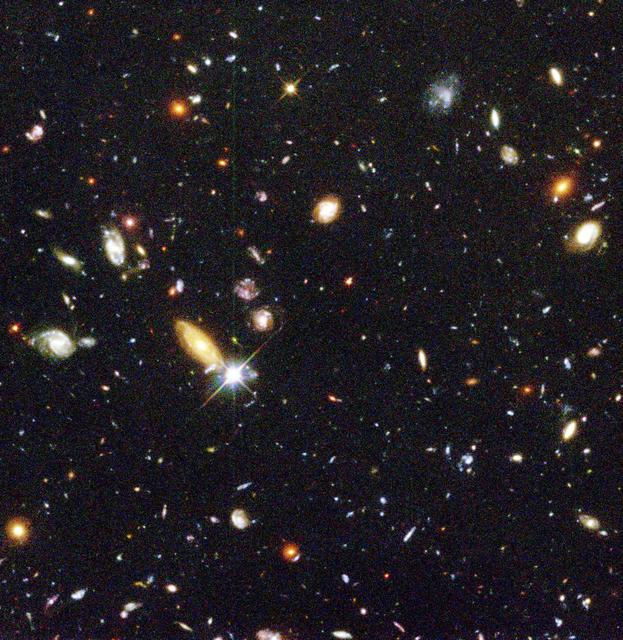About Unicosmoism & the Church of Cosmic Oneness
I grew up in the forested foothills of the White Mountains in New England. Life was quiet and slow. There were no busy streets or crowds—just a red house on a dirt road, halfway up a small mountain. At that time, cell phones were rare, and the internet was still dial-up (we didn’t get it until I was around seven or eight). Most of my days were spent away from screens and noise.
Along with the lack of technological stimulation, my parents were also non-religious and did not raise me to be any particular faith. They encouraged me to make my own choices and to research *everything* beforehand, using multiple and verefiable sources whenever possible. I also encourage all of you to do the same thing here and always question everything.
For most of my childhood, I was outside more often than not—sometimes with the few kids who lived nearby, but more often on my own. The woods were always there, and over time they became something familiar, even comforting. Being surrounded by nature without much distraction helped me see how connected everything really is—how the trees, animals, water, and air work together in quiet harmony. Most people go through their entire lives without noticing that connection, and it pains me to see.
That time in nature also led me to become interested in the bigger picture: space, the stars, the planets, and what might lie beyond. Here I’m going to break down, in a very oversimplified way, a few common religious and scientific viewpoints of the world. If you’re reading this, you probably already know a fair amount about different religions and beliefs. If not, there are many texts and videos that will give you a more thorough theological or historical lesson than I can—and that, ultimately, is not the point of this introduction.
Through years of astronomical and astrological research, I’ve come to notice what I like to describe as a woven fabric—a web—that encompasses and permeates every aspect of the Universe. You couldn’t have the Universe without this underlying structure. This same fabric is why scientists—most notably Alain Aspect, Stuart Freedman, and John Clauser—studying quantum mechanics and string theory have been able to observe two entangled particles reacting to stimulation at exactly the same moment, even when they’re separated by enormous distances. These researchers, along with many more, claim that you could instantly change the properties of one particle’s twin, even if they were on opposite sides of the Universe. That suggests that, on a fundamental quantum level, the speed limit imposed by light is not universal—it applies only to certain phenomena, not to this deeper connectivity. This means there could very well be a cosmic “Butterfly Effect” resulting from every single action that has ever and will ever occur.
Now, to the possible origins of the Universe. Most people believe the Universe came into existence about thirteen billion years ago via the Big Bang. According to this theory, every known particle was once contained in a single point—crammed together into one very dense super-particle. Something triggered a sudden expansion, producing a cosmic explosion of particles and then gases. Over time, these particles and gases condensed into larger objects—stars, nebulae, galaxies, planets, moons, asteroids, and so on—until, billions of years later, here we are.
The second most popular idea about the origin of existence and life comes from belief in a God. In these accounts, God is typically all-knowing, omnipotent, almighty, and eternal. Many believers say that God essentially caused His own “Big Bang,” resulting in the current Universe and life as we know it. No matter how you slice it, the God-centric version of creation isn’t all that different from the scientific Big Bang theory: either way, everything begins from a single point—a singularity, whether it’s a super-dense particle or a divine act. Even in the Hindu tradition, creation is sometimes described as a dream dreamed by the god Lord Vishnu. In most Hindu cosmological accounts, Vishnu reclines in “yogic sleep” (yoga-nidra) upon the cosmic waters, resting on the serpent Ananta-Śeṣa. The whole universe—its creation, sustenance, and eventual dissolution—is said to be the content of his dream. When Vishnu “wakes,” that dream dissolves; when he “sleeps,” the dream (i.e., the manifested cosmos) appears.
If there is one common thread that most mainstream religions follow, it is that the Universe comes from a single point—whether a singularity, a God, or even a God’s dream. This is also the basis of Unicosmoism and the Church of Cosmic Oneness. In Unicosmoism, we take that knowledge of unity and oneness at the beginning and recognize that we are, at root, still that same unity and oneness. We strive to build a community made up of any faith, culture, or belief, united under the realization and universal truth that we’re all the same children of creation, acting as beacons of pure love and light—helping our fellow brothers and sisters, including the rest of the Animal Kingdom and even our cosmic friends from other worlds.
The Order of Unicosmoism & the Unicosmist Ways and the Church of Cosmic Oneness were founded as a gathering place for those who have always felt an undeniable inner connection to the planet and the Universe. It’s for those who have been wandering their path alone—desiring to be seen and heard—but unable to find like-minded individuals without joining some monarchically-themed sect full of pointless rules, regulations, and dogma that only inhibit spiritual growth and cosmic awareness. Welcome to the path of unity and oneness.
~ Rev. C.P. Johnson
The teachings of Unicosmoism are not mere words, but living truths that guide our actions, thoughts, and hearts. To walk the Unicosmist Way is to be a vessel for love, harmony, and cosmic responsibility. We are not separate but one with the cosmos, and in this unity, we find our strength and purpose.
 Hubble Deep Field
Hubble Deep Field